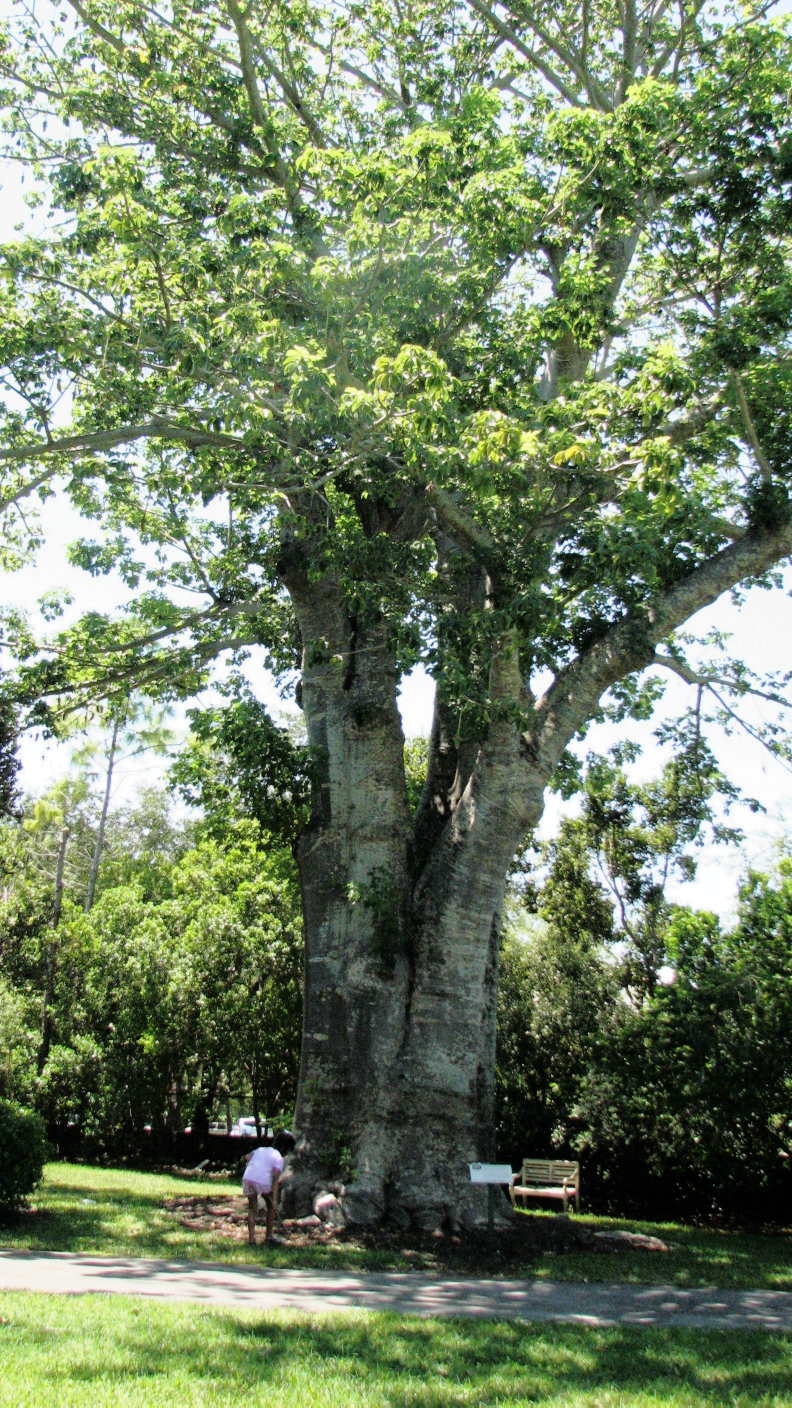Under the Baobab Tree
Adansonia digitata, the Baobab tree, is a species from the Bombacaceae family. It is also known by many other names, such as the 'dead-rat tree' (from the appearance of the fruits,) 'monkey-bread tree' (the soft fruits are edible,) 'upside-down tree' (the sparse branches resemble roots,) and cream of tartar tree. In French, it is known as calebassier du Sénégal and arbre de mille ans; in Portuguese as molambeira, imbondeiro, calabaceira and cabacevre; and in Swahili as mbuyu, mkuu hapingwa, mkuu hafungwa and muuyu.
This is a long living tree, and some have been carbon dated to thousands of years. Baobab trees flower for the first time at about 20 years of age. In mid-summer, dozens of luminous white blossoms—the size of saucers—open at sunset. Their strong musky odor attracts fruit bats and hosts of other insects. Bats seek out the sweet nectar so they collect and distribute pollen as they move from flower to flower.
The seeds are housed in a hairy pod that resembles a miniature rugby ball, inside of which is a white pulp from which “cream of tartar” is derived. The baobab’s branches, with their hollows, dents and bloated stems, provide shelter and home for a great many animals: bushbabies, squirrels, rodents, lizards, snakes and tree frogs, as well as spiders, scorpions, and insects may live their entire lives in a single tree. Holes in the trunk provide ideal nesting sites for birds, such as rollers, hornbills, parrots, kestrels and spinetails. Larger cavities are often occupied by families of Barn Owls or Ground Hornbills. Eagles, vultures and storks frequently build their large stick nests on the outer branches. The nests of red-billed Buffalo-weavers are more often found in Baobabs than any other tree.
The fruit can be used for flour, the seeds roasted and the leaves cooked as vegetables. It has twice as much calcium as milk, is high in anti-oxidants, iron
and potassium, and has 6 times the vitamin C of an orange. The bark of the Baobab tree has been used traditionally in Africa to fight fevers.
The baobab tree serves as a meeting place for many villages to discuss community matters, relate the news of the day, or tell stories, thus the expression "Under the Baobab Tree."
This tree is not too large and it is in the FTBG. The photo is taken today and you can see (with some difficulties in this shot) the hanging flowers. It's always hard for me to take this kind of photos to show details against a bright sky as background. If you know the secret for these shots, meet me here.


1 comment:
On March 12 08 I posted the same tree.
(http://togofcoralgables.blogspot.com
/2008/03/adansonia-digitata.html)
I will post one from our neighborhood. It's one third as tall but the trunk is just as wide.
Post a Comment